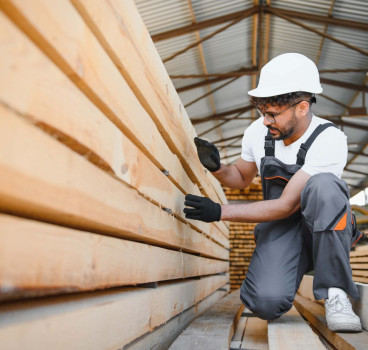The concrete jungle and its quest for sustainability
While it may seem like a simple building material, the concrete market is in fact a complex and dynamic industry poised for significant growth in the coming years. A recent report by Allied Market Research predicts the global concrete market will reach a staggering $972.0 billion by 2030, reflecting a compound annual growth rate (CAGR) of 4.7%, writes John Ridgeway.
According to the report, governments around the world are investing heavily in infrastructure development, reconstruction and repair and this increased spending is directly translating into a demand for concrete, particularly ready-mix concrete and precast products – solutions which offer faster construction times and reduced project costs compared to traditional methods.
That said, concrete has always offered a compelling combination of affordability, durability and ease of use and recent advancements in manufacturing technology have enhanced production quality and capacity, further propelling market expansion.
The growth of the concrete market is not uniform across the globe. Developed regions like North America and Europe are only expected to see steady growth due to ongoing infrastructure maintenance and repair projects. However, the most significant growth is anticipated in developing regions like Asia Pacific, the Middle East and Africa. This rapid expansion is driven by urbanisation and industrialisation, leading to a surge in construction activity in these regions.
According to the World Bank, the urban population in developing countries is expected to reach 5.3 billion by 2050. This rapid urbanisation will necessitate the construction of new housing, commercial buildings and infrastructure, leading to a significant increase in concrete demand.
However, despite the projected growth, the concrete industry faces many challenges. Cement production, a key ingredient in concrete, is a major contributor to greenhouse gas emissions, accounting for roughly 8% of global CO2. Furthermore, rising environmental awareness is leading to a growing demand for more sustainable construction materials, potentially hindering the growth of the traditional concrete market.
Exploring alternatives
To offset this, there are several initiatives underway to reduce the environmental impact of concrete production. These include blended cements, which are replacing a portion of traditional Portland cement with supplementary cementitious materials such as fly ash and slag which can significantly reduce CO2 emissions associated with cement production.

Incorporating recycled materials like demolition waste or crushed glass aggregates into concrete is also helping minimise raw material extraction and reduce the environmental footprint and researchers are developing new concrete formulations with lower carbon footprints. These formulations may incorporate alternative binding agents with reduced environmental impact, such as geopolymers or calcium sufflaminate cement (CSA).
While minimising environmental impact is crucial, it should not come at the expense of performance and cost-effectiveness. The key lies in striking a balance between environmental consciousness and maintaining the essential qualities of concrete. Research and development efforts are focused on creating cost-effective and sustainable alternatives that can compete with traditional concrete in terms of its exceptional durability and long lifespan. Sustainable alternatives need to match these qualities to ensure the longevity of structures built with them.
As already mentioned, rapid urbanisation and industrialisation, particularly in developing countries, are creating a surging demand for construction projects, presenting a significant growth opportunity for the concrete market – one that is dominated by a handful of key players. They include industry giants like CEMEX, S.A.B. de C.V., CRH, Holcim, and HeidelbergCement AG. These companies are actively pursuing growth strategies such as acquisitions, collaborations and product launches to expand their market reach.
Alongside established players, smaller companies specialising in sustainable concrete solutions are also making their mark. These companies are developing innovative precast products and concrete mixes with lower environmental footprints, catering to the growing demand for eco-friendly construction materials.
Building a sustainable future
This is because the construction industry is increasingly acknowledging the need for sustainable practices and to remain competitive, concrete manufacturers are having to explore different innovative solutions.
Researchers are developing new concrete formulations with lower carbon footprints. These formulations may incorporate recycled materials or alternative binding agents with a reduced environmental impact. They are also exploring ways to optimise concrete production processes to minimise energy consumption and water usage.
In addition, emerging 3D printing technologies offer exciting possibilities for concrete construction. These offer the potential to optimise material use by creating complex structures with minimal waste. 3D printing also allows for on-site construction, reducing transportation costs and environmental impact.
Furthermore, researchers are exploring the potential of bio-based concrete, where microorganisms are used to strengthen the material and reduce the reliance on traditional cement. Bio-concrete can self-heal minor cracks and offers improved durability in harsh environments.
The concrete market is a significant economic force with immense potential for further growth. However, long-term success hinges on addressing environmental concerns. By embracing innovations in green concrete technologies and sustainable practices, the industry can continue to provide the essential building blocks for a thriving future, literally and figuratively.
It will, however, require a transition towards a more sustainable concrete industry, which will involve governments, who have the power to incentivise the use of eco-friendly concrete through tax breaks and green building codes. Construction companies will also need to continue to embrace sustainable practices and incorporate innovative solutions into their projects. Finally, consumers can play a role by advocating for the use of sustainable building materials in their homes and communities.
By working together, we can ensure that the concrete jungle of the future is built on a foundation of sustainability, ensuring a healthier planet and a thriving-built environment for generations to come.
Additional Blogs

What if Building Control went fully digital?
Building control governs structural integrity, fire protection, energy efficiency, accessibility and countless other aspects of design and construction. Historically, this process has been highly...
Read moreWhere most “Smart Buildings” go wrong
Smart buildings are often presented as the ultimate in modern construction - interconnected, efficient, intuitive and driven by real-time data. They promise lower operating costs, reduced energy use,...
Read more

The future of facilities management starts at RIBA Stage 0
Facilities management has traditionally been treated as a discipline that only becomes relevant once a building is handed over. At that point, FM professionals inherit decisions made months or years...
Read more